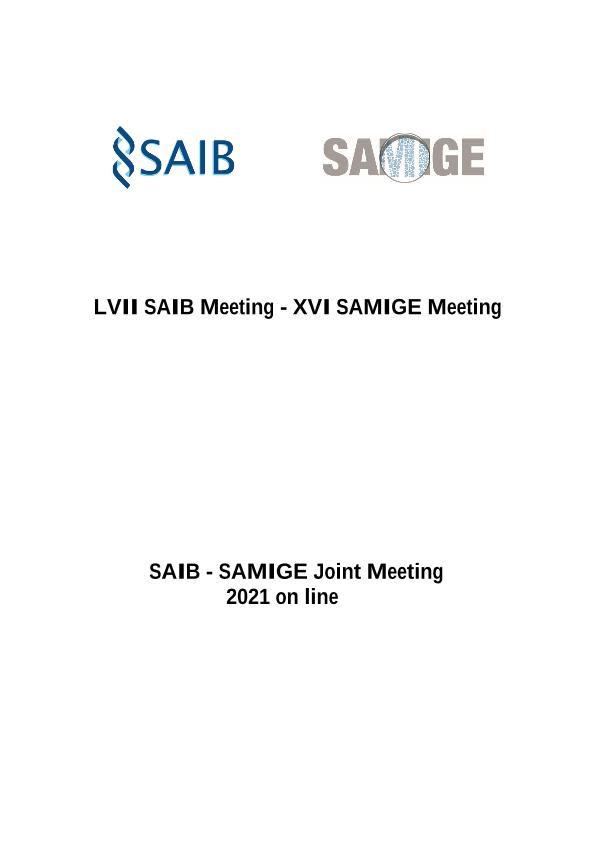Evento
Ex vivo progression of spermatogenesis entails accretion of lipids with long and very-long-chain polyenoic fatty acids
Tipo del evento:
Reunión
Nombre del evento:
LVII Annual Meeting of the Argentine Society for Biochemistry and Molecular Biology Research and XVI Annual Meeting of the Argentinean Society for General Microbiology
Fecha del evento:
01/11/2021
Institución Organizadora:
Sociedad Argentina de Bioquímica y Biología Molecular;
Sociedad Argentina de Microbiología General;
Título de la revista:
Biocell
Editorial:
Tech Science Press
ISSN:
0327-9545
e-ISSN:
1667-5746
Idioma:
Inglés
Clasificación temática:
Resumen
Spermatogenesis can proceed ex vivo in neonatal mouse testes using a gas-liquid interphase culture system. Previously we observed both in vivo and ex vivo, a relationship between the progression of spermatogenesis (at cytological and histological level) and the gene expression of some of the enzymes involved in fatty acid and lipid biosynthesis. The aim of this study was to survey whether the same developmental changes that occur in vivo in the testicular lipids that contain long-chain (C18-C22) and very-long-chain (C24-C32) polyunsaturated fatty acids (PUFA) are present in neonatal testis explants kept in culture. Testis explants from 6-day old mice cultured for 22 days evidenced a progress in spermatogenesis beyond the meiotic phase in some of the tubules. The appearance of haploid germ cells concurred with an increase in the expression of Fabp9, Dgat2 and Fa2h. Notably, genes involved in PUFA biosynthesis (Elovl2, Elovl4, and Fads2) were up-regulated in the testicular explants in comparison with the in vivo situation. Interestingly, during the period in culture the tissue accumulated triacylglycerides (TAG), triglycerides with an ether bond (TEB) and cholesterol esters (CE) and, like in vivo, this was associated with perilipin 2 (Plin2) up-regulation. Concomitantly, although to a lesser extent than in vivo, the proportion of major C22 PUFAs (22:5n-6, 22:5n-3 and 22:6n-3) increased in the glycerophospholipids (GPL) of explants. Like in vivo, the 22:5n-6/20:4n-6 ratio increased with ex vivo development, and 22:5n-6 was the major PUFA of total testicular lipid after 22 days of culture. Interestingly, the explants accumulated n-9 PUFAs in GPL, CE and TEB (e.g., 20:3n-9, 22:3n-9 and 22:4n9), while in vivo these PUFAs were negligible at all postnatal ages. Finally, we observed that the biosynthesis of ceramides (Cer) was activated in the explants in culture. Notoriously, traces of germ cells-specific molecular species of Cer with 28:4n6 and 30:5n-6 were detected. The data are consistent with specific PUFA elongation and desaturation being activated during ex vivo germ cell differentiation, and highlight that influences that promote the biosynthesis of PUFA-containing lipids should be considered to optimize ex vivo spermatogenesis.
Palabras clave:
TISSUE CULTURE
,
SPERMATOGENESIS
,
LIPIDS
,
PUFA
Archivos asociados
Licencia
Identificadores
Colecciones
Eventos(INIBIBB)
Eventos de INST.DE INVEST.BIOQUIMICAS BAHIA BLANCA (I)
Eventos de INST.DE INVEST.BIOQUIMICAS BAHIA BLANCA (I)
Citación
Ex vivo progression of spermatogenesis entails accretion of lipids with long and very-long-chain polyenoic fatty acids; LVII Annual Meeting of the Argentine Society for Biochemistry and Molecular Biology Research and XVI Annual Meeting of the Argentinean Society for General Microbiology; Virtual; Argentina; 2021; 47-47
Compartir




